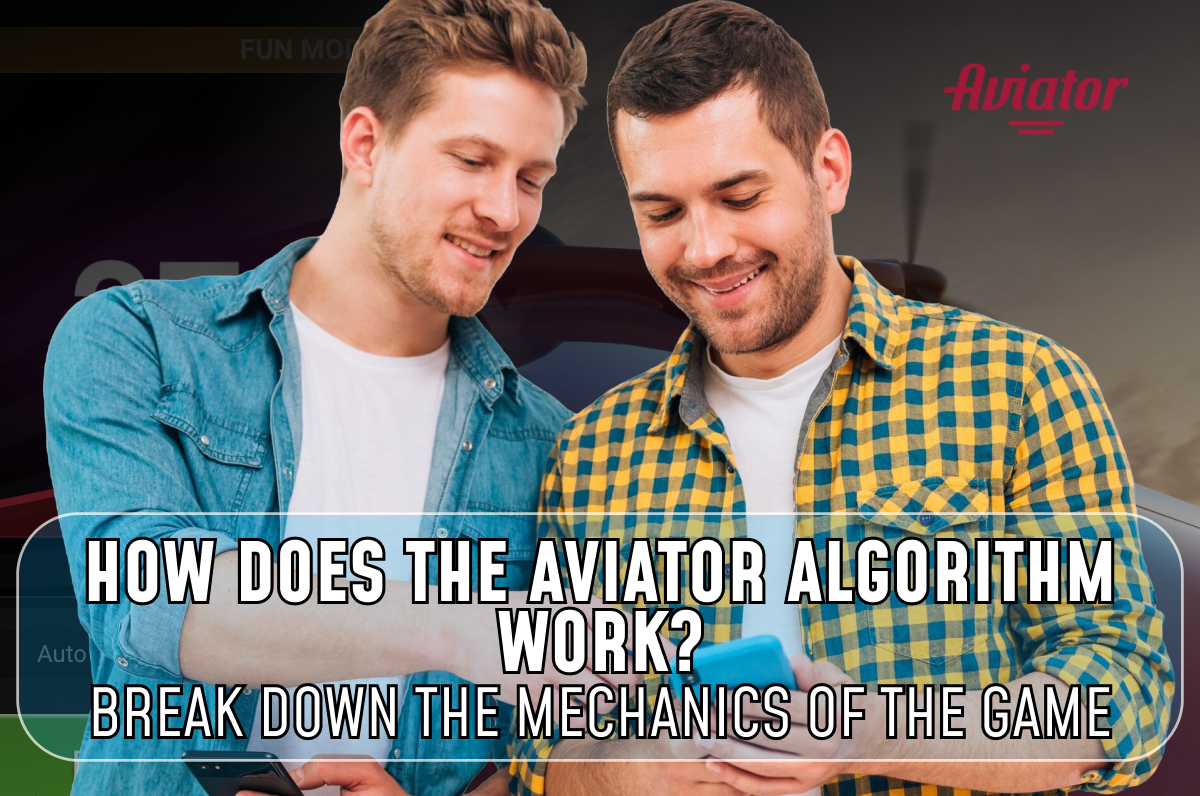How Does the Aviator Algorithm Work? Break Down the Mechanics of the Game

The aviator game algorithm is a complex system that turns the game into a unique mix of excitement and maths. Unlike classic slots, where the result depends on static combinations, here everything is based on dynamics that cannot be predicted. Each round is the take-off of the virtual plane, the growth of the coefficient and the player’s decision: to take the winnings in time or to take a risk, hoping for a big profit. To understand how it works, you need to dive into the basics: randomness, the mechanics of multipliers and the transparency of the processes.
Randomness Generation: The Heart of the Algorithm
At the heart of each round is a pseudo-random number generator (PRNG) that determines the moment of ‘crash’ – the disappearance of the aircraft. This moment is generated before the round starts, but remains hidden until the end. The CRNG generates a number, e.g. 4.78, which means that the plane will disappear when the multiplier reaches 4.78x. The numbers are not linked between rounds, so previous results have no effect on future ones.
An interesting nuance: even the smallest changes in the input data (for example, the exact start time of a round) lead to completely different results. This eliminates the possibility of predictions through pattern analysis. If in one round the crash happened at 2x, in the next round it can happen at 1.1x or 100x.
Exponential Multiplier Curve
The multiplier starts at 1x as soon as the round starts and follows an exponential curve. This means that the value increases slowly in the first few seconds and then accelerates. For example, at the 3rd second the multiplier may be 1.5x; at the 5th second it may be 2.3x; at the 10th second it may be 10x.
Such dynamics creates psychological pressure: the player sees the potential winnings growing, but realises that at any moment everything can be cut off. This is where the main skill – the ability to balance between greed and caution – comes into play.
The multiplier growth graph is not a decoration. It is directly related to the algorithm. If the GCH has set the crash at 5x, the curve will be calculated so that the multiplier reaches this value in a random time (from 2 to 30 seconds). The speed depends on a mathematical model that simulates a realistic aircraft take-off.
Fairness Check: Provably Fair
The Provably Fair system is a guarantee that neither the player nor the platform can manipulate the results. Here’s how it works:
- Before a round starts, the server generates a secret key and its hash (encrypted version). The hash is published in the game’s interface.
- After the round is over, the secret key is revealed and players can verify that it matches the hash.
- Using this key and the round data (e.g. start time), a crash multiplier is calculated, which must match the published result.
Example: If a player suspects manipulation, he can manually check the hash via a special tool in the game menu. This eliminates even hypothetical operator intervention.
Player’s Role: From Betting to Cashout
The Aviator game algorithm does not change depending on the user’s actions, but the player can influence his result through:
- Timely cashout. The longer the player waits, the higher the multiplier, but also the risk of crashing increases. For example, player A locks in $1,000 at 1.5x, getting $1,500, and player B waits 3x, but the plane disappears at 2.8x and the bet is burned.
- Using two bets. The ‘one bet on the low odds, the second bet on the high odds’ strategy allows you to diversify your risk. If the first bet is picked up at 1.2x and the second bet crashes at 4x, the player is left in the spit at the expense of minimal winnings.
- Auto features. Setting the auto-cashout at 2x or 5x reduces the emotional load. Beginners often use this to avoid panic and impulsive decisions.
Interesting fact: according to statistics, about 70% of rounds end at multipliers below 3x, but players rarely lock in profits at such values, hoping for higher odds.
Myths and Strategies: What Works And What Doesn’t Work

Myth 1: ‘If a plane has gone 5 times at 1.5x, the next round will have a high multiplier.’
Reality: Each round is independent. The probability of crashing at 1.5x the sixth time is exactly the same as the first.
Myth 2: ‘autostrategies Using AI Can Predict a Crash.’
Reality: No algorithm is able to account for the randomness of the HCS. Even complex mathematical models show an accuracy of no more than 50%, which is comparable to guessing.
Bankroll management is the basis of success. For example, a player sets a rule: ‘I do not bet more than 5% of my deposit in one round’ or ‘I stop playing after three losses in a row’. Such methods do not affect the algorithm, but protect from a quick drain of the budget.
Technical Security and Data Protection
The algorithm runs on servers with a level of protection comparable to banking systems. All transactions are encrypted with TLS protocols and player data is stored in anonymised form. Even in the event of DDoS attacks or hacking attempts, rounds continue to be processed correctly thanks to backup servers.
The Psychology of the Game: Why It’s Addictive
Aviator’s dynamics exploit two key instincts:
- The excitement of uncertainty. The brain actively releases dopamine at the sight of a rising multiplier, creating the illusion of control (‘One more second and it’ll be 10x!’).
- The ‘almost-win’ effect. If the plane disappears immediately after a cashout, the player feels relieved and confident in his strategy, even if the winnings are minimal.
These factors make the game emotionally intense, but require a conscious approach. As practice shows, players who set strict limits on time and budget are less likely to encounter problems.
Bottom Line: Algorithm as a Reflection of Reality
Game Aviator doesn’t try to imitate luck – it creates it through mathematical randomness. There is no room for cheating or ‘loaded’ rounds, but there are no guaranteed wins either. Each flight is a microcosm of excitement, where the player’s decision becomes the main factor.
The game remains a pastime, not an investment. And as in any game of chance, the key to comfort is not in finding secret strategies, but in knowing how to stop in time.



